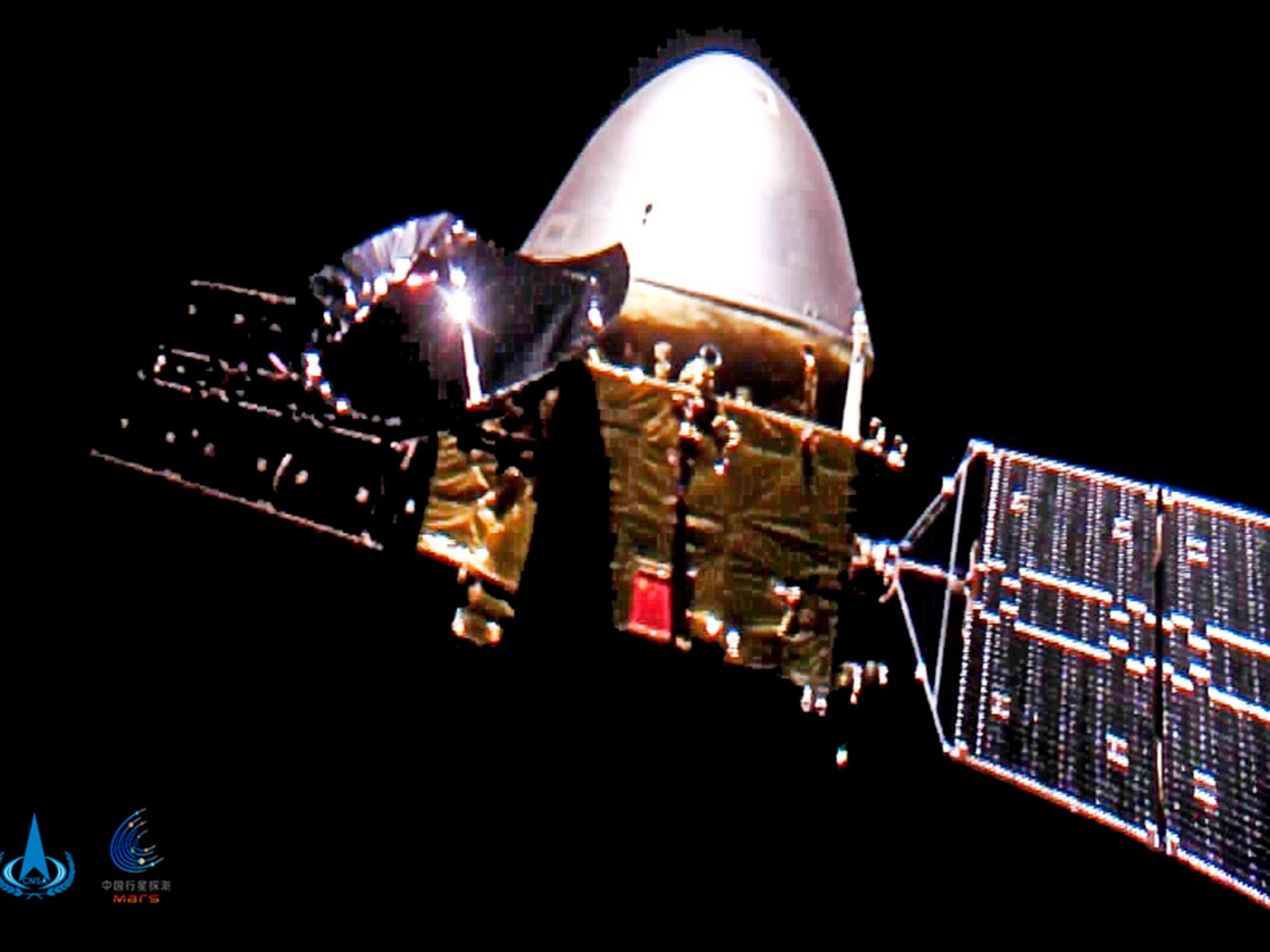Chinese spacecraft nearing Mars, world's 2nd in 2 days
A Chinese spacecraft appears poised to enter orbit around Mars

Your support helps us to tell the story
From reproductive rights to climate change to Big Tech, The Independent is on the ground when the story is developing. Whether it's investigating the financials of Elon Musk's pro-Trump PAC or producing our latest documentary, 'The A Word', which shines a light on the American women fighting for reproductive rights, we know how important it is to parse out the facts from the messaging.
At such a critical moment in US history, we need reporters on the ground. Your donation allows us to keep sending journalists to speak to both sides of the story.
The Independent is trusted by Americans across the entire political spectrum. And unlike many other quality news outlets, we choose not to lock Americans out of our reporting and analysis with paywalls. We believe quality journalism should be available to everyone, paid for by those who can afford it.
Your support makes all the difference.A Chinese spacecraft appears poised to enter orbit around Mars one day after an orbiter from the United Arab Emirates did so and about a week ahead of an American attempt to put down another spacecraft on the surface of the red planet.
Chinese authorities, always cautious about possible failure, have not announced a planned arrival time. The official Xinhua News Agency reported last week that the spacecraft was expected to slow down around Wednesday before entering orbit and preparing for a Mars landing.
The challenging attempt to touch down on Mars isn't expected for about three months. If all goes as planned, China would become only the second nation to do so successfully.
Named Tianwen-1, the Chinese orbiter-rover combo needs to fire its engines to slow enough to be captured by Mars’ gravity after a 470-million kilometer (290-million mile) journey that took more than six months. It would circle and map Mars until the rover separates and attempts to land in May to look for water underground and signs of ancient life.
Its name, the title of an ancient poem, means “Quest for Heavenly Truth.”
Landing a spacecraft on Martian soil is notoriously difficult, and China’s attempt will involve a parachute, back-firing rockets and airbags. Its proposed landing site is inside the massive, rock-strewn, Utopia Planitia, where the U.S. Viking 2 lander touched down in 1976.
The solar-powered rover — about the size of a golf cart — is expected to operate for about three months, and the orbiter for two years.
Only the U.S. has successfully touched down on Mars — eight times beginning with the two Viking missions. A lander and rover are in operation today.
A U.S. rover called Perseverance is aiming for a Feb. 18 touchdown on Mars to also search for signs of ancient microscopic life and to collect rocks for return to Earth in the next decade.
The latest three Mars missions were all launched in July to take advantage of the planet's close alignment with Earth that occurs only every two years. The UAE's orbiter called Amal, Arabic for Hope, began circling the red planet on Tuesday to gather detailed data on Mars’ atmosphere.
Six others were already operating around Mars: three U.S., two European and one Indian.
Plenty didn't make it. Smashed Russian and European spacecraft litter the Martian landscape along with a failed U.S. lander. About a dozen orbiters missed the mark.
Tianwen-1 is China’s second attempt to send a spacecraft to Mars. In 2011, a Chinese orbiter that was part of a Russian mission didn't make it out of Earth’s orbit.
China’s secretive, military-linked space program has progressed considerably since then. In December, its Chang’e 5 mission was the first to bring lunar rocks to Earth since the 1970s. China was also the first country to land a spacecraft on the little-explored far side of the moon in 2019.